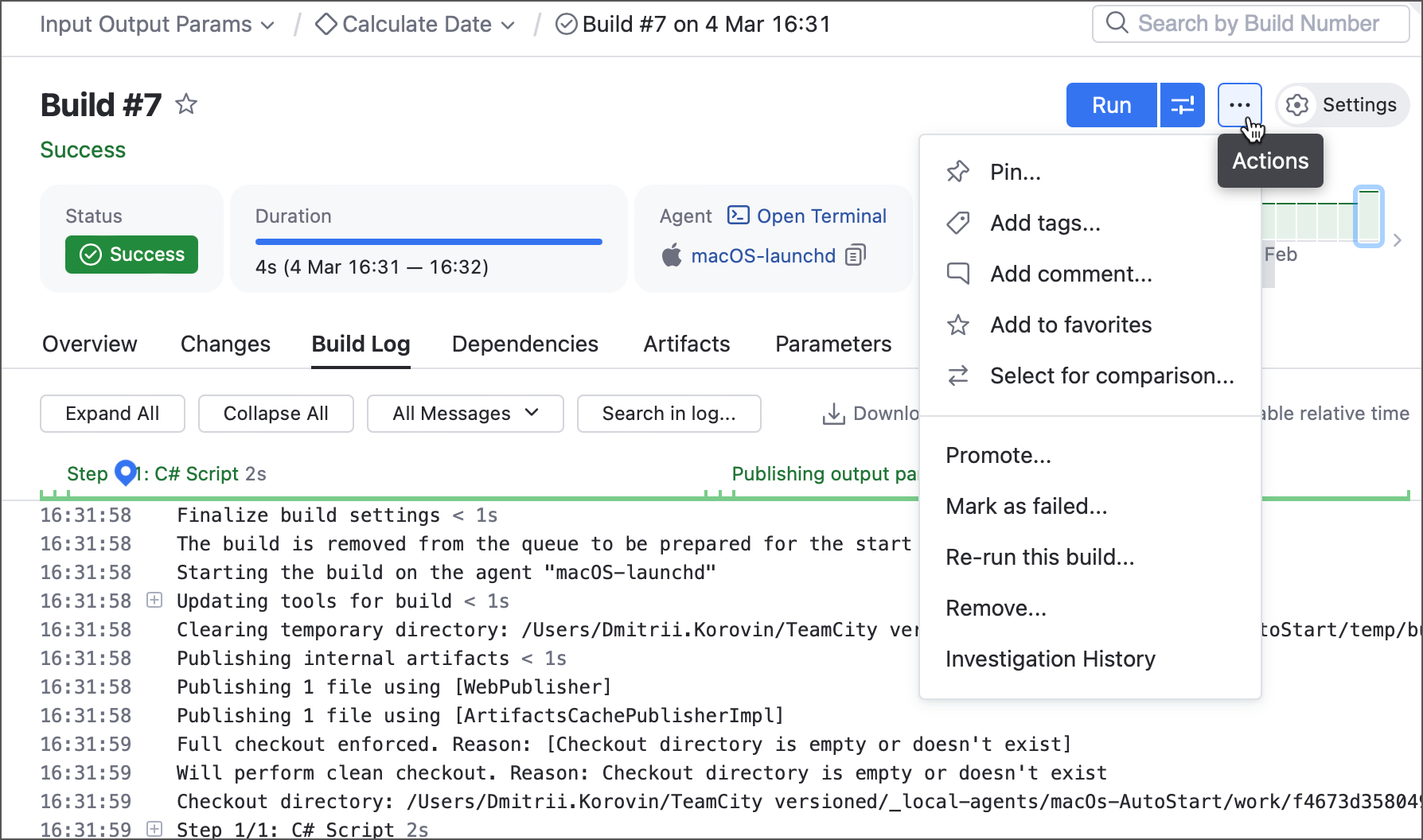What's New in TeamCity 2025.03
As part of the previously announced TeamCity/Pipelines merge ,version 2025.03 introduces another major UI update. Key changes include:
The Edit Project/Configuration button is replaced with the Settings toggle. The View and Edit modes toggled by this UI element use different accent colors for distinguishing between the two at a glance. In addition, TeamCity stays in the selected mode unless you explicitly switch it. This means once you've switched to project/configuration settings, you can navigate to another configuration and project without exiting the Edit mode.

Project settings have been grouped into categories, making it easier to navigate between them.
Build configuration settings are now arranged as tabs.

The headers of the Project, Configuration, and Build pages have been redesigned for a lighter, more compact look with improved visibility. For example, builds now display key details — repository branch, total build time, queue time, and more — in dedicated blocks, while the Actions menu is accessible via the ellipsis button next to Run.

Starting with version 2025.03, Meta-runners are evolving into Recipes. While the core concept remains — creating custom build steps for frequently used actions — this transition offers multiple key benefits:
Define recipes in XML or (in future releases) YAML
Use built-in Recipes crafted by the TeamCity team
Your existing Meta-runners will continue to work and are accessible from the updated Add Build Step page.

Learn more: Working with Recipes
The Parameters tab of build configuration setting now features two tabs: input and output parameters.

Input parameters are your regular build parameters that existed before version 2025.03.
Output parameters are build parameters with an explicit access permission. Values of these parameters can be read by any dependent configuration via the
dep.<config name>.<parameter name>syntax.
Previously, dependent configurations could access any non-password parameter. Starting with version 2025.03, unless you choose to automatically expose all existing parameters, only newly created output parameters can be shared. This explicit input/output parameter separation allows configuration developers to adjust input parameters as needed without risking issues in external configurations that rely on these parameters.
Learn more: Use Parameters in Build Chains
TeamCity now supports merging code changes from one Perforce stream to another. This enhancement enables two features:
The Automatic Merge build feature now supports build configurations that utilize Perforce VCS roots.
The Actions build menu now includes the option to merge code changes manually.
Learn more: Automatic Merge | Working with Feature Branches
You can now run all configuration steps within a single Docker/Podman container by adding the Run in Docker build feature to your build configuration. This feature enables familiar build step Container Settings on a build configuration level, so you only need to set these settings once instead of repeating them for each individual step.
Kotlin Script build steps now support the Container Wrapper, meaning you can now run these steps in Docker/Podman containers.
We’ve renamed the build feature that enables TeamCity to log in to private container registries and clean up images. Previously called Docker Support, it is now Docker Registry Connections as of version 2025.03.
The new name more accurately reflects the feature's functionality, aligns with the similar NPM Registry Connection, and prevents confusion with the new Run in Docker feature.
The Kotlin DSL syntax changed in line with this rename:
// Prior to 2025.03
features {
dockerSupport {
loginToRegistry = on {
dockerRegistryId = "PROJECT_EXT_11,PROJECT_EXT_13" }
cleanupPushedImages = true
}
}
// Version 2025.03 and newer
features {
dockerRegistryConnections {
loginToRegistry = on {
dockerRegistryId = "PROJECT_EXT_11,PROJECT_EXT_13" }
cleanupPushedImages = true
}
}TeamCity now shows a health report that alerts you to disconnected but authorized agents, helping you identify issues and maintain a complete agent fleet.
The Perforce CLI tool is now available on ARM-based TeamCity Agent Docker images.
Before upgrading, we highly recommend reading about important changes in version 2025.03 compared to 2024.12.
See the TeamCity 2025.03 release notes article for the summary of implemented features and fixed issues.
See the TeamCity roadmap to learn about future updates.
We recommend using the Automatic Update for the easiest and most reliable upgrade. For more information on the upgrade process and available options, see Upgrading TeamCity Server and Agents.
To download a .tar.gz or .exe installer for any TeamCity major or bug-fix version, visit the Previous Releases Downloads article.
For TeamCity servers running in Docker containers, see this article.
We place a high value on your feedback and encourage you to share your thoughts and suggestions. See this link for more information: Support and Troubleshooting.